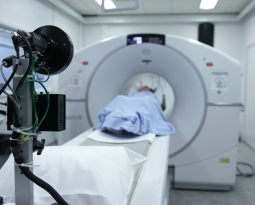Minnesota Patent of the Month – May 2023
Anteris Technologies Corporation is a Structural Heart Company focused on developing medical device solutions to improve patient outcomes. One of the conditions they address is aortic valve stenosis, which affects around 5% of people over age 75. This condition narrows the aortic valve, reducing the amount of blood that can flow through it and causing the heart to work harder. Severe cases require valve replacement, which can be done through traditional surgery or transcatheter aortic valve replacement (TAVR).
Anteris has developed a biomimetic prosthetic heart valve that has enhanced performance characteristics to improve the effectiveness of TAVR procedures. The prosthetic heart valves include a valve member made of biomaterial that is molded into a specific three-dimensional shape, designed to provide low mean pressure gradient, low leaflet stress, large open area, high coaptation area, and high duration in an open state. The valve member is also attached to an expandable metallic stent frame that is reconfigurable between a low-profile delivery configuration and an expanded operable configuration.
The company’s prosthetic heart valve also features a concave region positioned so that there are two free edges that are non-parallel to each other, with an angle between 80° and 120°. This unique three-dimensional shape allows the valve to open wider and remain open longer, improving blood flow and reducing the risk of future stenosis.
The protective covering members attached to the stent frame also protect the valve member from direct contact with the metallic stent frame, prolonging the life and performance of the valve. In addition, a skirt can be attached to the stent frame to cover other portions of the stent frame, preventing direct contact between the valve member and any uncovered portion of the stent frame.
Anteris Technologies’ prosthetic heart valve is an innovative solution that improves the effectiveness of TAVR procedures and reduces the risk of future stenosis. By mimicking a natural heart valve, the prosthetic achieves native performance. Referred to as “DurAVR™ TAVR”, the company’s valve replacement is currently in the clinical trial phase of development.
Are you developing new technology for an existing application? Did you know your development work could be eligible for the R&D Tax Credit and you can receive up to 14% back on your expenses? Even if your development isn’t successful your work may still qualify for R&D credits (i.e. you don’t need to have a patent to qualify). To find out more, please contact a Swanson Reed R&D Specialist today or check out our free online eligibility test.
Who We Are:
Swanson Reed is one of the U.S.’ largest Specialist R&D tax advisory firms. We manage all facets of the R&D tax credit program, from claim preparation and audit compliance to claim disputes.
Swanson Reed regularly hosts free webinars and provides free IRS CE and CPE credits for CPAs. For more information please visit us at www.swansonreed.com/webinars or contact your usual Swanson Reed representative.

















